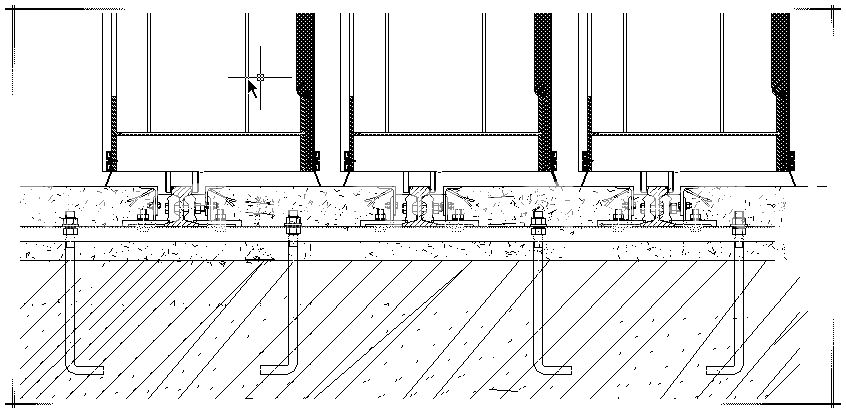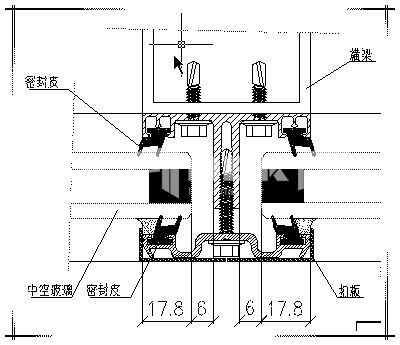Panel doors
Panel doors, also called stile and rail doors, are built with frame and panel construction:
Stiles - Vertical boards that run the full height of a door and compose its right and left edges. The hinges are mounted to the fixed side (known as the "hanging stile"), and the handle, lock, bolt, and/or latch are mounted on the swinging side (known as the "latch stile").
Rails - Horizontal boards at the top, bottom, and optionally in the middle of a door that join the two stiles and split the door into two or more rows of panels. The "top rail" and "bottom rail" are named for their positions. The bottom rail is also known as "kick rail". A middle rail at the height of the bolt is known as the "lock rail", other middle rails are commonly known as "cross rails".
Mullions - Smaller optional vertical boards that run between two rails, and split the door into two or more columns of panels, the term is used sometimes for verticals in doors, but more often (UK and Australia) it refers to verticals in windows.
Muntin - Optional vertical members that divide the door into smaller panels.
Panels - Large, wider boards used to fill the space between the stiles, rails, and mullions. The panels typically fit into grooves in the other pieces, and help to keep the door rigid. Panels may be flat, or in raised panel designs.
Light or Lite - a piece of glass used in place of a panel, essentially giving the door a window.
Plank and batten doors
Plank and batten doors are an older design consisting primarily of vertical slats:
Planks - Vertical boards that extend the full height of the door, and are placed side by side filling the doors width.
Battens - Smaller slats that extend horizontally across the door which the planks are affixed to. The battens hold the planks together. Sometimes a long diagonal slat or two are also implemented to prevent the door from skewing. On some doors, especially antique ones, the battens are replaced with iron bars that are often built into the hinges as extensions of the door-side plates.
Ledged and braced doors
This type consists of vertical tongue and grooved boards held together with battens and diagonal braces.
Impact-resistant doors
Impact-resistant doors have rounded stile edges to dissipate energy and minimize edge chipping, scratching and denting. The formed edges are often made of an engineered material such as Acrovyn. Impact-resistant doors excel in high traffic areas such as hospitals, schools, and hotels.
[edit]Frame and filled doors
This type consists of a solid timber frame, filled on one face, face with Tongue and Grooved boards. Quite often used externally with the boards on the weather face.
Flush doors
Many modern doors, including most interior doors, are flush doors:
Stiles and rails - As above, but usually smaller. They form the outside edges of the door.
Core material: Material within the door used simply to fill space, provide rigidity and reduce druminess.
Hollow-core - Often consists of a lattice or honeycomb made of corrugated cardboard, or thin wooden slats. Can also be built with staggered wooden blocks. Hollow-core flush doors are commonly used as interior doors.
Lock block - A solid block of wood mounted within a hollow-core flush door near the bolt to provide a solid and stable location for mounting the doors hardware.
Stave-core - Consists of wooden slats stacked upon one another in a manner similar to a plank & batten door (though the slats are usually thinner) or the wooden-block hollow-core (except that the space is entirely filled).
Solid-core - Can consist of low-density particle board or foam used to completely fill the space within the door. Solid-core flush doors (especially foam-core ones) are commonly used as exterior doors because they provide more insulation and strength.
Skin - The front and back faces of the door are then covered with wood veneer, thin plywood, sheet metal, fiberglass, or vinyl. The wooden materials are usually layered with the grain alternating direction between layers to prevent warping. Fiberglass and metal-faced doors are sometimes given a layer of cellulose so that they may be stained to look like real wood.
Moulded doors
Stiles and rails - As above, but usually smaller. They form the outside edges of the door.
Core material: Material within the door used simply to fill space, provide rigidity and reduce druminess.
Hollow-core - Often consists of a lattice or honeycomb made of corrugated cardboard, or thin wooden slats. Can also be built with staggered wooden blocks. Hollow-core flush doors are commonly used as interior doors.
Lock block - A solid block of wood mounted within a hollow-core flush door near the bolt to provide a solid and stable location for mounting the doors hardware.
Stave-core - Consists of wooden slats stacked upon one another in a manner similar to a plank & batten door (though the slats are usually thinner) or the wooden-block hollow-core (except that the space is entirely filled).
Solid-core - Can consist of low-density particle board or foam used to completely fill the space within the door. Solid-core flush doors (especially foam-core ones) are commonly used as exterior doors because they provide more insulation and strength.
Skin - The front and back faces of the door are covered with HDF / MDF skins.












